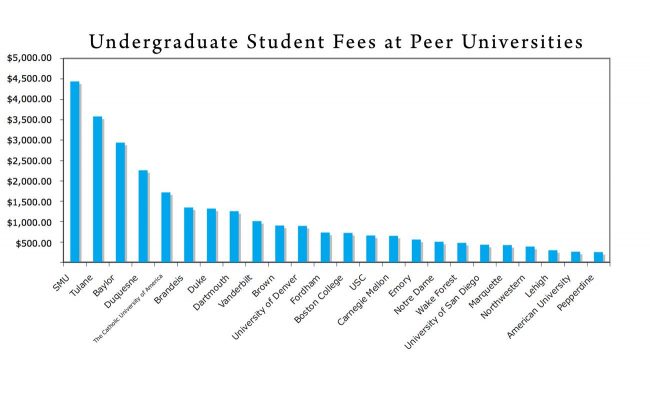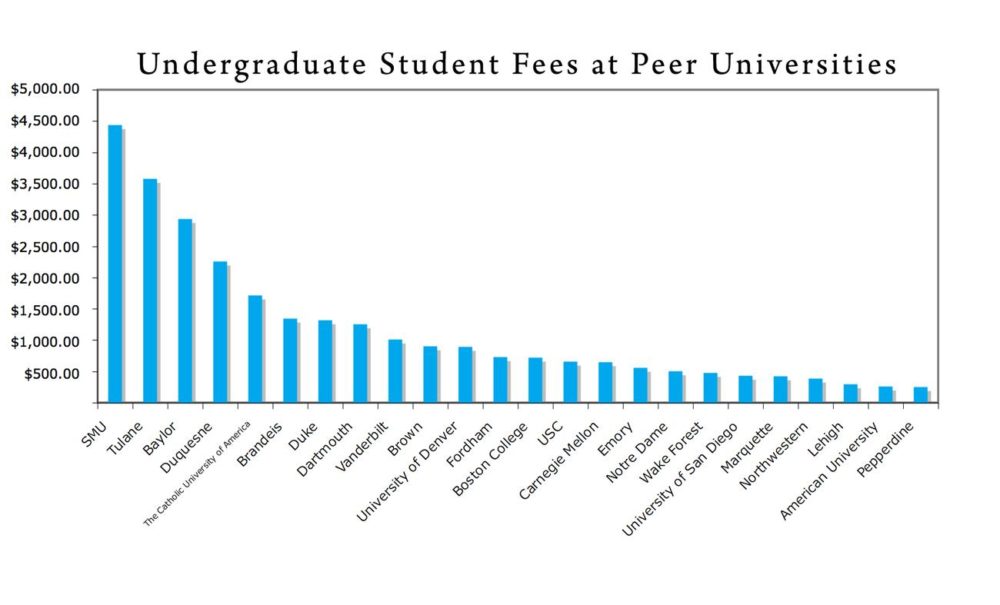

Marika Wynne expected to go through four years of college when she entered SMU in the fall of 2009. But after a conversation with her academic advisor last spring, something changed: she’s graduating in three years instead.
“I wish I could do a victory lap, but it’s just not cost effective,” said Wynne, a senior dance major who has been taking an 18-hour load each semester so she can graduate in May.
Tuition is the dominant reason that Wynne cannot afford a fourth year at SMU. However, she said the general student fees also played a large role in her decision to graduate early.
SMU charged its full-time, undergraduate students $4,440 in student fees this year, yet the university’s administration won’t provide a specific breakdown for where the money goes. This amount is, for the most part, thousands of dollars higher than all 24 of SMU’s peer universities, leaving Wynne and other students wondering what they are paying for.
“If they’re called student fees, they must be for us in some capacity,” Wynne said. “I think that if you are paying, you have the right to know what you’re paying athletics.”
Most of SMU’s peer universities numerically break down student fees on their websites. For example, student fees at Notre Dame are $507 for the 2011-2012 school year. Fees include a $250 technology fee, a $150 health center access fee, a $95 student activity fee and a $12 Observer fee (the student newspaper). Notre Dame has the third lowest fees among SMU’s 12 peer benchmark universities.
“Our fees are broken down and right now we think that’s the right thing to do,” said Joseph Russo, director of student financial strategies at Notre Dame. “Transparency, especially today, is expected from much.”
According to Hiser, Dartmouth used to charge tuition and fees together, but administrators decided to separate the two categories so they could display the specific charges assigned for student fees. For 2011 to 2012, Dartmouth’s student fees included a $225 health access fee, $234 for student activities and an $801 general student services fee, which covers technology costs, library services and facilities and recreation activities and facilities, among others.
“It makes it easier to explain what the charges are,” Hiser said. “By being transparent then you don’t have to spend a lot of time helping them understand